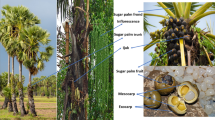Abstract
The flexural behavior of two kinds of PPS-based composites (carbon and glass fiber woven fabric reinforcements) from 23 to 200 °C was evaluated in terms of load–displacement curves, stiffness, strength and failure mechanisms. With the increase in temperature, the bending stiffness for carbon and glass fiber-reinforced thermoplastic composites decreased by 36.71 and 34.98%, and bending strength deceased by 68.44 and 61.23%, respectively. The failure mode shifted from a brittle fracture to a ductile manner with the increase in temperature owing to the enhanced plasticization of matrix. Dynamic mechanical analysis was performed to characterize the glass transition and decomposition processes of both PPS-based composites and to establish the relationship between temperature and mechanical properties . Compared with the different empirical models, a new simple and stable thermo-mechanical model was proposed to estimate the variation of flexural properties for both thermoplastic composites with temperature.











Similar content being viewed by others
References
Spruiell JE, Janke CJ (2004) A review of the measurement and development of crystallinity and its relation to properties in neat poly (phenylene sulfide) PPS and its fiber reinforced composites. In: Technical report of the US department of energy, metals and ceramics division, ORNL/TM-2004/304, pp 1–3
Hancox NL (1998) Overview of effects of temperature and environment on performance of polymer matrix composite properties. Plast Rubber Compos Process Appl 27:97–106
Vieille B, Aucher J, Taleb T (2012) Comparative study on the behavior of woven-ply reinforced thermoplastic or thermosetting laminates under severe environmental conditions. Mater Des 35:707–719
Park HJ, Chun BC (1996) Effect of temperature on the mechanical and morphological properties of polyphenylene sulfide composites. Polym Bull 37:103–110
Lou AY, Murtha TP (1987) Environmental effects on glass fiber reinforced PPS stampable composites. J Compos Mater 21:910–924
Meyer DR, Bersee HEN, Beukers A (2008) Temperature effect on reinforced thermoplastic composite properties for primary aircraft structure applications. In: Forty ninth structures, structural dynamics, and materials conference, Schaumburg. doi:10.2514/6.2008-1938
Vieille B, Aucher J, Taleb L (2009) Influence of temperature on the behavior of carbon fiber fabrics reinforced PPS laminates. Mater Sci Eng A 517:51–60
Vieille B, Taleb L (2011) About the influence of temperature and matrix ductility on the behavior of carbon woven-ply PPS or epoxy laminates: notched and unnotched laminates. Compos Sci Technol 71:998–1007
Blond D, Vieille B, Gomina M, Taleb L (2014) Correlation between physical properties, microstructure and thermo-mechanical behavior of PPS-based composites processed by stamping. J Reinf Plast Compos 33:1656–1668
Gabrion X, Placet V, Trivaudey F, Boubakar L (2016) About the thermomechanical behaviour of a carbon fibre reinforced high-temperature thermoplastic composite. Compos B 95:386–394
Ha SK, Springer GS (1989) Nonlinear mechanical properties of a thermoset matrix composite at elevated temperatures. J Compos Mater 23:1130–1158
Gibson AG, Wu YS, Evans JT, Mouritz AP (2006) Laminate theory analysis of composites under load in fire. J Compos Mater 40:639–658
Feih S, Mathys Z, Gibson AG, Mouritz AP (2007) Modeling the compression strength of polymer laminates in fire. Compos A 38:2354–2365
Feih S, Mathys Z, Gibson AG, Mouritz AP (2007) Modeling the tension and compression strengths of polymer laminates in fire. Compos Sci Technol 67:551–564
Bai Y, Keller T, Vallée T (2008) Modeling of stiffness of FRP composites under elevated and high temperatures. Compos Sci Technol 68:3099–3106
Bai Y, Keller T (2009) Modeling of strength degradation for fiber-reinforced polymer composites in fire. J Compos Mater 43:2371–2385
Mahieux CA, Reifsnider KL (2002) Property modeling across transition temperatures in polymers: application to thermoplastic systems. J Mater Sci 37:911–920. doi:10.1023/A:1014383427444
Mahieux CA (1999) A systematic stiffness-temperature model for polymers and applications to the prediction of composite behavior. Ph.D. dissertation, Virginia Polytechnic Institute and State University, pp 1–8
Mahieux CA, Reifsnider KL (2001) Property modelling across transition temperatures in polymers: a robust stiffness-temperature model. Polymer 42:81–91
Correia JR, Gomes MM, Pires JM, Branco FA (2013) Mechanical behavior of pultruded glass fiber reinforced polymer composites at elevated temperature: experiments and model assessment. Compos Struct 98:303–313
Bosze EJ, Alawar A, Bertschger O, Tsai YI, Nutt SR (2006) High-temperature strength and storage modulus in unidirectional hybrid composites. Compos Sci Technol 66:1963–1969
Akay M (1993) Aspects of dynamic mechanical analysis in polymeric composites. Compos Sci Technol 47:419–423
Li JL, Jiao YN, Sun Y (2007) Experimental investigation of cut-edge effect on mechanical properties of three-dimensional braided composites. Mater Des 28:2417–2424
Fujihara K, Yoshida E, Nakai A, Ramakrishna S, Hamada H (2007) Influence of microstructures on bending properties of braided laminated composites. Compos Sci Technol 67:2191–2198
Hufenbach W, Gude M, Böhm R, Zscheyge M (2011) The effect of temperature on mechanical properties and failure behavior of hybrid yarn textile-reinforced thermoplastics. Mater Des 32:4278–4288
Acknowledgements
This work has been supported by the National Natural Science Foundation of China (Nos. 51271067, 11572101 and 11672089).
Author information
Authors and Affiliations
Corresponding author
Rights and permissions
About this article
Cite this article
Wang, S., Zhou, Z., Zhang, J. et al. Effect of temperature on bending behavior of woven fabric-reinforced PPS-based composites. J Mater Sci 52, 13966–13976 (2017). https://doi.org/10.1007/s10853-017-1480-0
Received:
Accepted:
Published:
Issue Date:
DOI: https://doi.org/10.1007/s10853-017-1480-0



